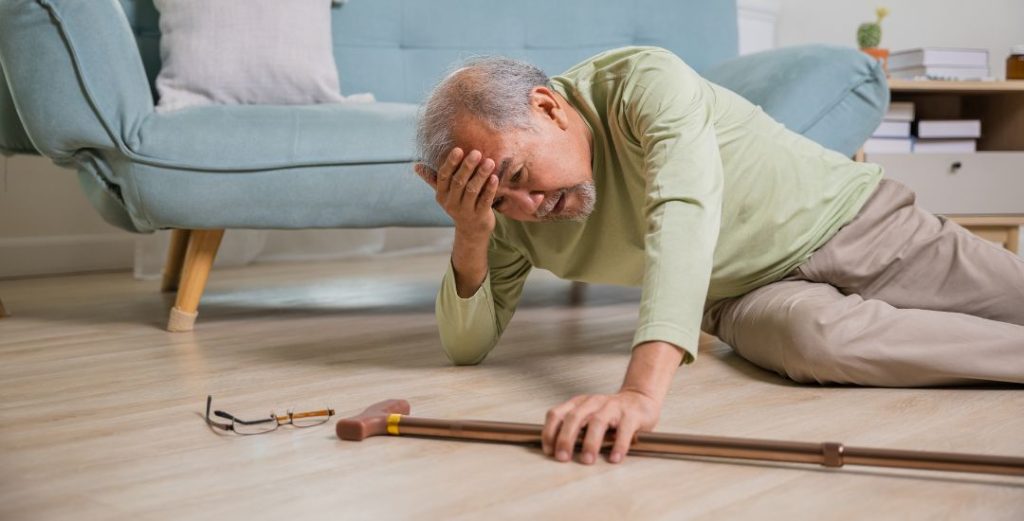Falls and Long-Term Care: A Hidden Link You Can’t Afford to Ignore

Key Insights
- Falls are the leading cause of injury among older adults and often mark the turning point from independent living to long-term care.
- Serious falls can result in lasting loss of mobility and independence, leading to reliance on caregivers, assisted living, or nursing homes.
- Age-related factors like muscle weakness, poor balance, cognitive decline, and unsafe environments significantly increase fall risks.
- Beyond health impacts, falls carry a major financial burden, often triggering the need for long-term care services that Medicare doesn’t fully cover.
- Prevention through exercise, home modifications, and regular health checks—paired with long-term care insurance—can protect independence and finances.
As we age, one of the most serious and often overlooked threats to our health and independence isn’t heart disease or cancer. It’s falls.
Falls are the leading cause of injury among adults over age 65, and they’re responsible for more hospitalizations than you might think. But beyond the bruises and broken bones, falls often lead to a much bigger shift: the need for long-term care.
Let’s explore how falls and long-term care are connected, why prevention is critical, and how you can plan ahead to protect yourself or your loved ones.
The Real Impact of Falls
According to the CDC, 1 in 4 older adults falls every year. Many of these falls result in serious injuries like hip fractures or head trauma that require hospitalization, rehabilitation, and sometimes even permanent placement in a long-term care facility.
What’s more concerning? After a serious fall, many older adults never fully recover their independence. They may need help with daily activities like bathing, dressing, or moving around—services typically provided by caregivers, assisted living facilities, or nursing homes.
When a Fall Becomes a Turning Point
In many cases, a fall is what tips the scale from independent living to needing long-term care. This can happen gradually, such as needing help with household tasks after a fall, or suddenly, such as being admitted to a nursing home after a hip fracture.
Here’s how it often plays out:
Fall → Hospital → Rehab → Assisted Living or Home Care
Unfortunately, the individual may never regain full mobility or confidence. Plus, the fear of falling again can limit physical activity, leading to faster decline.
Who’s at Risk?
While anyone can fall, the risk increases dramatically with age. Here are some key risk factors:
- Muscle weakness
- Poor balance or coordination
- Vision or hearing loss
- Cognitive decline (like dementia)
- Side effects from medications
- Environmental hazards (loose rugs, poor lighting, stairs without railings)
In long-term care settings, fall risks are even higher due to frailty, health conditions, and unfamiliar environments.
The Financial Toll
Falls don’t just affect health; they affect finances.
A single serious fall can trigger thousands of dollars in medical and caregiving costs, especially if it necessitates long-term care services. Medicare may cover hospital stays and rehab, but it doesn’t cover most long-term care services like custodial care at home or in a facility.
This is where long-term care insurance (LTCI) can be a financial lifesaver. Many LTCI claims begin after a fall because it’s often the event that leads to needing help with daily activities.
What You Can Do: Prevention and Planning
The good news? Many falls are preventable. Here are steps you can take today:
Fall Prevention Tips:
- Exercise regularly to improve strength and balance. (Tai Chi is great!)
- Have your vision and hearing checked annually.
- Review medications with your doctor or pharmacist.
- Make home modifications, such as grab bars, non-slip rugs, and brighter lighting.
- Use assistive devices like canes or walkers if recommended.
Long-Term Care Planning:
- Talk to your family about your care wishes.
- Consider long-term care insurance while you’re still in good health.
- Learn about care options in your area before you need them.
Falls are not just a minor accident. They’re often the first step into long-term care. By understanding the risks and planning ahead, you can protect your health, your independence, and your finances.
Whether you’re aging yourself or caring for an older loved one, don’t wait for a fall to start thinking about long-term care. Prevention and planning are your best allies.


